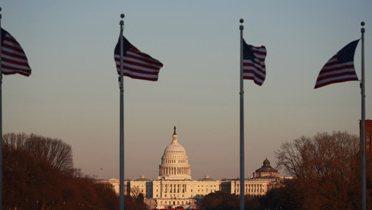Executive Summary
The current Congress–the 111th–is the most ideologically polarized in modern history. In both the House and the Senate, the most conservative Democrat is more liberal than is the most liberal Republican. If one defines the congressional “center” as the overlap between the two parties, the center has disappeared.
In this Issues in Governance Studies paper, Brookings scholar William Galston examines the evolution of the party system and asks whether a polarized party system can be regarded as healthy. Using the definition of political health that the American Political Science Association’s (APSA) Committee on Political Parties embraced in its 1950 report Toward a More Responsible Two-Party System, it seems fair to say there has been what the Committee would regard as progress. The parties have grown more unlike each other, giving the electorate a clear choice between competing programs and principles. Power in Congress is both more centralized and more participatory, as is the presidential nominating process. Parties are more responsible, internally and externally. Largely though not exclusively through the presidential nominating process, parties commit themselves to distinct agendas, and new administrations typically work hard to honor them.
So why, despite these signs of progress, do so many scholars see the current system as dysfunctional and perhaps even broken? In two important respects, the evolution of party politics resisted the thrust of the 1950 report: Institutional differences between the House and the Senate tugged against party unity and discipline; and candidate-centered politics increased dramatically at the expense of party elites. In addition to these factors, an overlooked paragraph in the APSA Committee’s report offers a clearer answer for why, despite progress in some areas, our system has become polarized to the point of gridlock.
The Committee stated that “There is no real ideological division in the American electorate, and hence programs of action presented by responsible parties for the voter’s support could hardly be expected to reflect or strive toward such division.” The assumption (or hope) that clarity could be attained without ideology, and responsibility without division, turned out to be an illusion. At the level relevant to real-world politics, it turned out, important policy differences are about ends as well as means, principles as well as techniques. But the problem went even deeper than the return of ideology. The collapse of the postwar consensus—on containing communism as the centerpiece of international policy, on government as the Keynesian manager of the economy, on culture as a sphere of contestation that should remain outside of politics—entailed the loss of shared assumptions. The consequence was the reverse of the “more reasonable discussion of public affairs” the Committee had so confidently expected.




